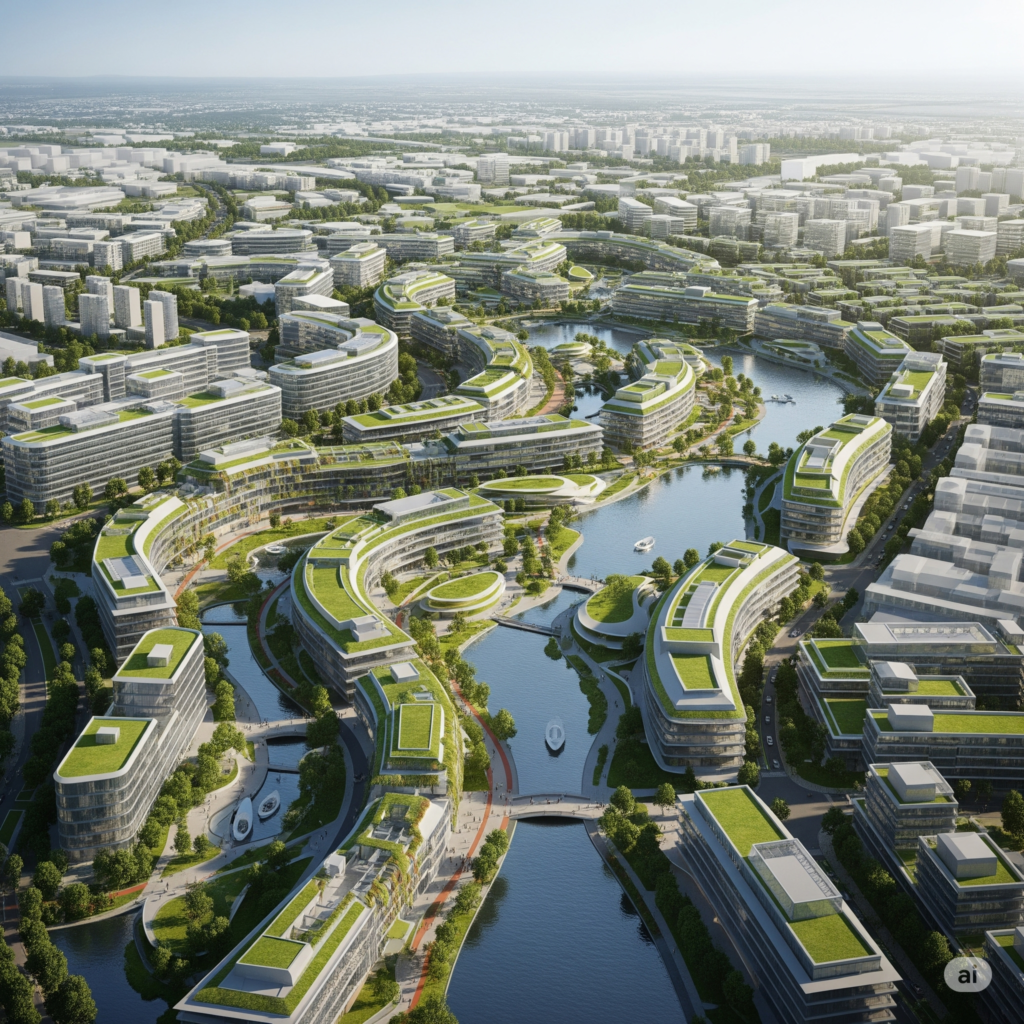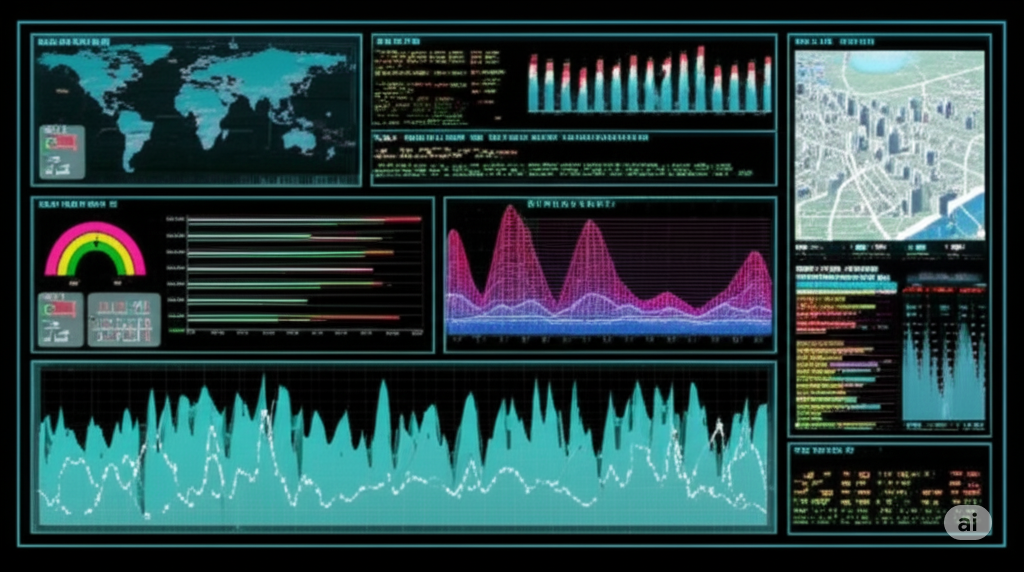Reimagining Cities for People and the Planet
As urban populations explode and climate shocks grow harsher, the world can no longer afford conventional concrete jungles. The solution? A new generation of smart cities designed with AI-driven infrastructure and climate-responsive architecture.
In 2025, architects and urbanists are pioneering walkable, landscape-integrated, tech-optimized cities that prioritize comfort, sustainability, and human well-being year-round.
This isn’t science fiction—it’s already happening in cities like Masdar (UAE), Amaravati (India), and Songdo (South Korea). Let’s explore how these designs are reshaping urban life.
🌦️ What Is Climate-Responsive Architecture?
Climate-responsive architecture adapts to local environmental conditions, aiming to:
- Minimize energy use
- Maximize natural ventilation and light
- Enhance human comfort throughout seasons
Key Elements:
- Building orientation for optimal sunlight and shading
- Use of passive cooling and heating systems
- Materials chosen based on local climate (e.g., stone in hot zones, wood in cold ones)
- Rooftop gardens and green walls for insulation and air purification
“A city that breathes with its climate can endure. One that fights it, collapses.” – Jane Jacobs-inspired design philosophy
🤖 AI’s Role: The City That Thinks Before You Move

In these next-gen cities, AI acts like a central nervous system, processing data from thousands of sensors to make urban life more efficient and livable.
🧠 Applications of AI in Smart City Design:
1. Traffic Optimization
- Smart signals adjust based on real-time congestion
- Pedestrian-first zones auto-limit vehicle access during high footfall hours
2. Energy Efficiency
- AI monitors weather and adjusts HVAC (heating/cooling) in public buildings
- Solar grids shift load based on use patterns
3. Waste & Water Management
- Predictive models optimize garbage pickup routes
- Greywater reuse systems adjust flow for irrigation needs
4. Urban Safety
- CCTV + AI vision = real-time crime detection and emergency alerting
- Predictive policing for resource allocation (with ethical constraints)
For example, Barcelona’s AI platform reduced energy consumption in smart lighting systems by 30%, saving €42 million annually.
🚶♀️ Walkability: Putting People Before Cars
A cornerstone of this architecture is a walkable layout—a stark departure from vehicle-centric urban sprawl.
Features of Walkable Smart Cities:
- Compact, mixed-use neighborhoods
- Wide, shaded pedestrian paths
- Car-free zones & micro-mobility lanes (bikes, e-scooters)
- Public spaces within 10 minutes of every residence
- AI-enhanced smart crosswalks that adjust signal timing for foot traffic
A walkable city is healthier, safer, and more climate-friendly. According to WHO, people in walkable areas get 37% more physical activity.
🏞️ Integration with the Landscape: The City as Ecosystem

Smart city design now seeks to blend with, not erase, natural surroundings.
Landscape-Sensitive Elements:
- Use of native plants and green buffers to combat urban heat
- Constructed wetlands and bioswales for flood resilience
- Buildings that contour to terrain instead of leveling it
- Preservation of existing water bodies, forests, and slopes
Case Study:
In Singapore, the Punggol Digital District is designed with:
- Rain gardens for stormwater capture
- Canopy trees for thermal comfort
- AI-monitored biodiversity corridors
🏗️ Materials & Construction: The New Building Blocks
Construction choices are also being revolutionized with sustainability in mind.
Key Innovations:
- Cool roofs with reflective coatings reduce urban heat islands
- Aerated concrete and hempcrete as carbon-negative materials
- Prefabricated modular buildings (AI-managed logistics = zero waste)
- 3D printing structures on-site using recycled waste
These cities aim for net-zero construction, enabled by AI-driven life cycle analysis of materials.
📡 Infrastructure That Listens: Urban Internet of Things (IoT)
Cities are embedded with sensors that feed real-time data to AI dashboards. This data governs:
- Air quality
- Public restroom availability
- EV charging station usage
- Park crowd density
- Water pressure or leakage alerts
In Songdo, over 10,000 sensors feed data into a single city operating system—used by planners, emergency services, and utilities.
🔄 Real-World Examples: Where Theory Meets Practice
1. Masdar City, UAE
- Solar-powered, wind-channeled, AI-monitored
- Buildings oriented to maximize shade and airflow
- Designed for net-zero emissions
2. NEOM, Saudi Arabia
- Features “The Line”: a car-free linear city with AI-powered transport
- Climate control via passive solar design
- 100% renewable energy plan
3. Amaravati, India
- Walkable layout + green corridors
- AI-based solid waste management
- Hybrid planning model combining tradition + smart governance
⚖️ Challenges Ahead
- Affordability: Can such cities scale to low-income regions?
- Surveillance risks: AI-powered monitoring must ensure data privacy
- Cultural displacement: Balancing heritage and modernity
- Tech obsolescence: Keeping systems up-to-date in fast-moving tech landscape
Ethical urbanism must put citizen agency and transparency at its core.
🧠 Conclusion: The City of the Future Is Both Smart and Sensible
A climate-responsive, AI-integrated city is not just about gadgets and data—it’s about reclaiming the city as a space for people and nature to co-exist.
As we face the twin crises of climate change and rapid urbanization, these future-proof city designs offer a blueprint for survival, dignity, and joy.
The question is no longer if cities can think—but how wisely they do so.









+ There are no comments
Add yours